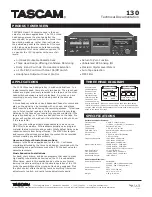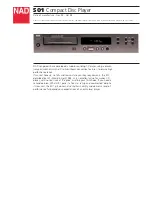
6
ProDVD 175
ProDVD 175
For more information about the ProDVD 175, please contact the website:
www.prodvd.philips.com
Communication between a ProDVD controller
and the DVD player consist of 3 different types of
information:
• External control commands
• External control status
• Asynchronous responses
The messages between the ProDVD and the
ProDVD controller look like: “[group, command,
parameterlist]\ r”
A
group,
command
and
parameter-list
betweensquare-brackets, followed by a carriage-
return character (\r).
The group and command are not case sensitive;
there is no difference in the usage of uppercase
and lowercase characters. The parameter-list
exists of comma separated parameters, and are
case sensitive.
When the player receives a message from the
external controller, it will be acknowledged. This
acknowledgment will be done in 2 different ways.
• For external control commands, the acknowl-
edgment will look like:
− group:
group specified in the
received message (PC)
− command:
command specified in the
received message
− parameter-list
ReturnValue
ReturnValue can have one of the following values
− 0: No error
− x: Error code x
Example:
− player receives: [PC, RC, 66]\r
− player sends:
[PC, RC, 0]\r
When the external controller receives the
response this implies that the player has verified
the received message (syntax), and the command
will be executed (It does not imply that the
command is executed without errors).
• For external control status messages there is
specified a response message on a request.
The response is the acknowledgment of the
request.
Example:
− Request:
[PS, GetAudioStream]\r
− Response:
[PS, GetAudioStream, 0, 2]\r
When the external controller receives the
response, the player has executed the command.
• When an external control command causes an
error, an asynchronous error message will be
send to the external controller.
Example:
− Player receives: [PC, RC, 44]\r
− Player sends:
[PC, RC, 0]\r
− Player sends:
[PR, Error, 10]\r
When the external controller receives the
response, the player has verified the message
(syntax), and when no errors occurred, the
command will be executed.
If an internal error occurs and the command can
not be executed, an error message will be send.
• When the command does not cause an error,
but execution of this command changes the
state of the player, this status change will be
send to the external controller. Also other
asynchronous responses, e.g. start of chapter,
can be expected.
Example:
− Player receives: [PC, RC, 44]\r
− Player sends:
[PC, RC, 0]\r
− Player sends:
[PR, StatusChange, 4]\r
− Player sends:
[PR, SOC, 2]\r






































